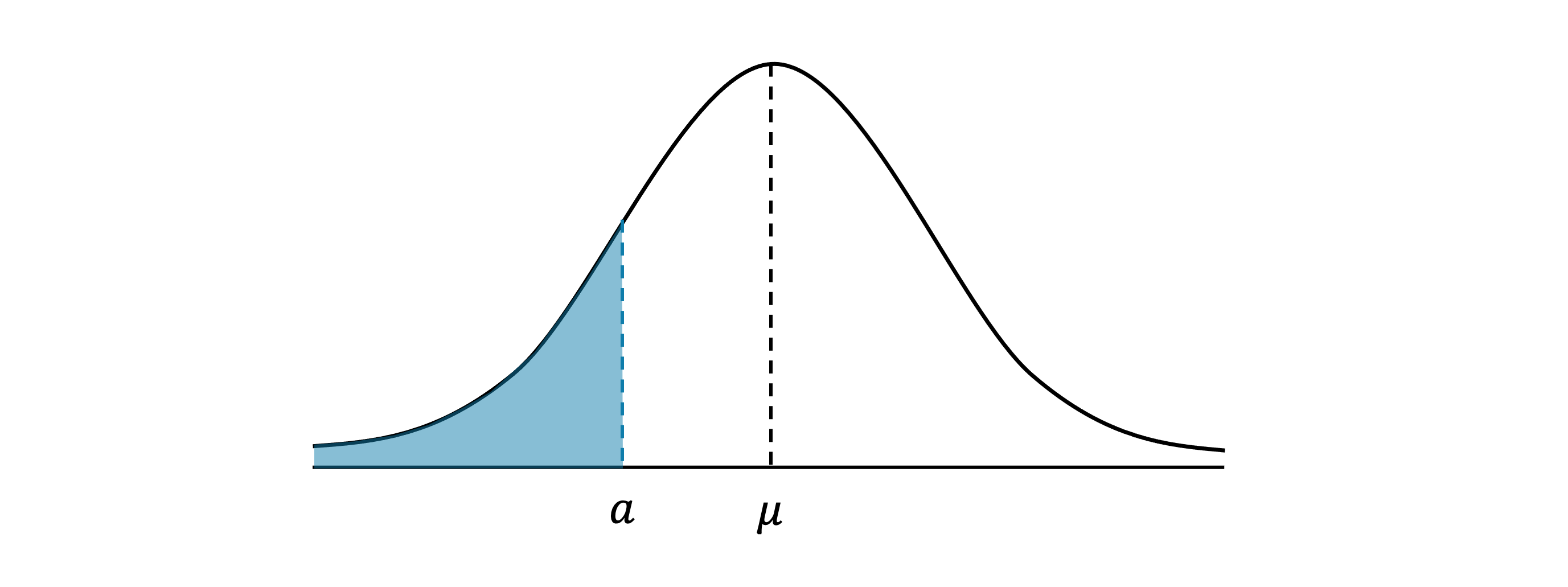Inverse Normal Calculations (College Board AP® Statistics): Study Guide
Inverse normal calculations
Given the value P(X < a) how do I find the value of a using the standard normal table?
The proportion of a distribution of a variable
that lies below a given value is the area under the curve to the left of the given value
This is also the probability that the variable lies below this value

where
is the
-score of the value
If you are given the proportion (or probability) and want to work out the value of
:
find the cell in the standard normal table that is
equal to the proportion
or the highest value that is less than the proportion
identify the
-score by listing the relevant row and column
convert the
-score back into an actual value
Given the value of P(X < a) how do I find the value of a using a calculator?
Your calculator will have a function called Inverse Normal Distribution
Some calculators call this InvN
Given that
you will need to enter:
The proportion (or probability),
This is the area of the distribution to the left of
The mean,
The standard deviation,
Some calculators might ask for the tail
For
this is the left tail
Examiner Tips and Tricks
Always check your answer makes sense!
If
is less than 0.5 then
should be smaller than the mean,
If
is more than 0.5 then
should be bigger than the mean.
A sketch will help you see this.
Given the value of P(X > b) how do I find the value of a using the standard normal table?
The proportion of a a distribution of a variable
that lies above a given value is the area under the curve to the right of the given value
This is also the probability that the variable lies above this value

where
is the
-score of the value
The total area under the curve is 1
So
If you are given the proportion (or probability) and want to work out the value of
:
subtract the proportion from 1
find the cell in the standard normal table that is
equal to this result
or the lowest value that is greater than the proportion
identify the
-score by listing the relevant row and column
convert the
-score back into an actual value
Given the value of P(X > b) how do I find the value of b using a calculator?
You will need to use the Inverse Normal Distribution function again
Given
Use
to rewrite this as
Then use the method for
to find
Your calculator may have the tail option (left, right or centre)
If so, you can use the Inverse Normal Distribution function straightaway by:
selecting right for the tail
and entering the area as
Examiner Tips and Tricks
Always check your answer makes sense!
If
is less than 0.5 then
should be bigger than the mean,
If
is more than 0.5 then
should be smaller than the mean.
A sketch will help you see this.
Worked Example
The distribution of heights of all adult male bison in a particular herd of bison is approximately normal with a mean of 5.9 feet and standard deviation 0.16 feet. The rancher wants to select the tallest twenty percent of the bison to use for a breeding program.
What is the minimum height that an adult male bison must be to qualify for the breeding program?
Answer:
Method 1: Using the standard normal table
Draw a sketch of the situation
Because , is less than 0.5,
should be bigger than the mean, i.e.
lies to the right of the mean

Using the standard normal table, look at section with the positive -values as
is above the mean
The standard normal table contains the proportions or percentages that are below a given value, i.e. to the left of the given value
You are given the proportion that lies to the right of , so use
to find the proportion to the left of
Find the cell that contains the value that is 0.8, if there is no exact value, find the smallest value that is greater than 0.8
0.8023 is the lowest value in the standard normal table that is greater than 0.8
Write down the -score from the corresponding row and column
Convert the -score into an actual value, using
Explain the value in the context of the question
The minimum height that an adult male bison must be to qualify for the breeding program is 6.04 feet
Method 2: Using a calculator
Draw a sketch of the situation
Because , it is less than 0.5 , therefore
should be bigger than the mean, i.e. to the right of the mean

You are given the proportion that lies to the right of , so use
to find the proportion to the left of
Write down the parameters for the situation
Enter these values into the Inverse Normal Distribution function on your calculator and calculate
Explain the value in the context of the question
The minimum height that an adult male bison must be to qualify for the breeding program is 6.04 feet

Unlock more, it's free!
Did this page help you?